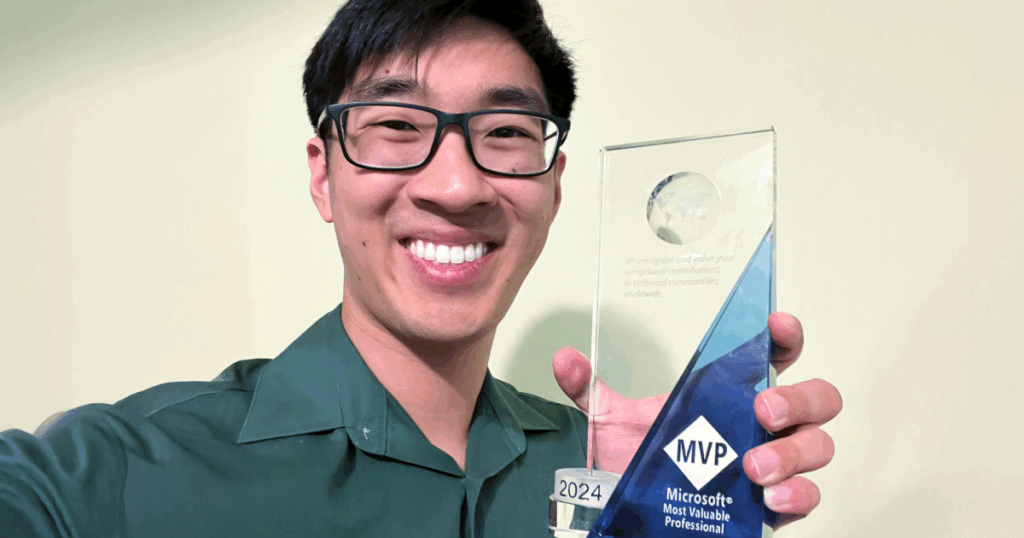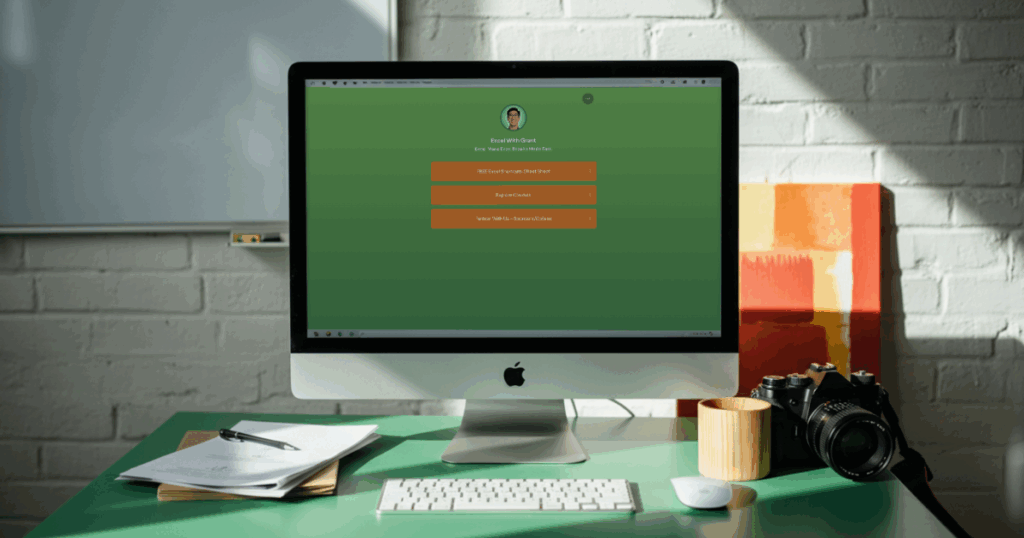I don’t know if you know this, but most people suck at Excel. Me? I can barely format a column without breaking the entire sheet. But hey, journalism degree. And for most people, they’re like me: absolutely clueless regarding Excel.
Excel is the digital equivalent of a Rubik’s Cube that most of us pretend to solve but secretly twist randomly until something looks passable. Studies show that only 18% of users consider themselves “advanced,” which is code for “I’ve used a pivot table once and now I hope you think I’m good at this.”
Enter Grant Huang, the guy who turned Excel from a headache into a career, one viral video at a time.
Excel With Grant

Better known as Excel With Grant, Huang is more than just a spreadsheet nerd. He’s the guy who can take a 32-minute YouTube tutorial and teach it in 45 seconds. He’s built a massive audience across TikTok, Instagram, and YouTube, racking up over 2.5 million followers who all want to understand this software, finally.
And because he’s so good at making Excel make sense, he’s been featured on Yahoo Finance, FOX, and Business Insider.
Check this out: 88% of spreadsheets are riddled with errors, meaning your coworker’s “coworker’s masterpiece” is probably held together by prayers. And let’s not forget the 57% of finance pros who spend half their lives fixing mistakes, proving that Excel is less a tool and more a time-sucking black hole.
Two-thirds of people think they’re Excel gods, but only 11% can pass a basic test. So next time you’re staring at a #DIV/0! Error, just remember: you’re not alone. We’re all just faking it until the spreadsheet works or until IT shows up to save us. (Cue Superman theme.)
Context and Consequences

Some mistakes have had massive consequences, like a now-infamous Excel error that led economists to conclude — incorrectly — that high debt hinders economic growth. With so many people wrestling with Excel’s complexities, it’s no surprise that creators like Grant Huang have built massive followings by helping users finally make sense of it all.
What makes Huang different? He doesn’t just teach Excel; he hacks it. He has built AI-integrated learning tools, found ways to automate tedious tasks, and figured out how to make spreadsheets work for you instead of against you. Despite his parents’ initial horror, he even dropped out of college to pursue this full-time. (Spoiler: It worked out.)
Excel isn’t going anywhere. But thanks to Grant, at least we can stop suffering through it.
After a year of neuroscience, COVID hit, and Huang had time to think. Did he really want to spend the next decade becoming a doctor? The answer was a hard no. His father gave him one other option: actuarial science. Dutifully, he followed that path until Excel nearly broke him.
“I studied actuarial science for the remaining two to three years. And then during those years, I started learning how to do data analysis, and I took on two internships. I worked at Globe Life and Blue Cross, Blue Shield as an actuarial analyst. I used Excel every single day at work, nine to five, every day, clockwork, and I struggled.”
Jumping into a beginner class in college helped, but it didn’t prepare him for the real world. Huang found himself way behind as deadlines sailed past. “I was just messing up, breaking everything into spreadsheets, like I almost took down an entire database by accident. I was trying to reach out to my coworkers for help because I was stuck. It turns out people who are using Excel for like,10-20, plus years were actually struggling with the same exact things, that’s when I knew there’s a big problem here: people don’t know how to use this tool.”
The Lightbulb Moment

What Huang figured out was imperative; people have their way of doing things. As a result, users had to learn to streamline processes. There was a spark. Huang didn’t love the actuarial sciences at all, but he did see an an opportunity because of that realization that everyone was figuring out Excel moment by moment.
“I took five different courses on Excel. I spent more than half of my savings at that time on Excel courses from other creators. It took me months to go through the content, and I just hated it. I was like, is there a way I can do this, but better, can I teach people Excel faster?”
It was a big gamble. “When I dropped out in my fifth year, I hadn’t made a single dollar. My mom cried. My dad didn’t believe in it. But I had the vision.”
Frustrated and stuck, Huang turned to social media as a distraction and an opportunity. He wasn’t just scrolling mindlessly; he was studying how viral content worked. And then he put it to the test.
“I subconsciously understood how to capture attention on TikTok short-form content. I started posting Excel tutorials. I had this whole vision mapped out. I got 200,000 followers in two weeks on TikTok and then 100,000 on Instagram. Within a year, I had over a million on Instagram, and it just kept growing. I figured out how to monetize and what a newsletter was, but since that’s happened, I’ve been making courses, selling them through social media and email marketing.”
Hooked on Excel

When it comes to having his processes down, Huang is on his game. He’s dialed it in beyond just an interesting premise. “I go for the hook, because the hook is everything. If you get their attention in less than a second, they’ll keep watching, especially when they’re scrolling through these videos with no intent. But I would say the body is also equally important. A lot of people will take forever to explain concepts that can be explained in seconds. I saw a 32-minute video on V lookup on YouTube. I taught that in like, 45 seconds, and it has the same value.”
Saving time is the driving force. “I was like, let me just show you exactly how to do it in the shortest amount of time, so you can start doing it. I work right away, and I don’t want to waste your time. So that was my differentiator.”
The way Huang sees it, you don’t have to be a wholesome, feel-good creator, pretending to prioritize personality over profit. “I didn’t start this to be inspiring. I saw a problem I could solve and knew I needed to solve a problem to make money.” He continued, “Instagram converts way better than TikTok. TikTok viewers are younger and don’t have money. Instagram has professionals who need Excel for work.”
The brand has grown considerably, and with that growth comes its own set of challenges. Life isn’t always roses, and you have to adapt to the constant demands that surround you. With things ramping up, there’s always something new to work on, including hiring people, which is a natural part of the ebb and flow of business. “Some months you lose money, some months you make money. That inconsistency is hard.”
The Secret Sauce

Now, Huang isn’t just teaching Excel; he’s redefining how people learn it. Whether it’s a finance bro drowning in spreadsheets or a student struggling with formulas, his bite-sized lessons are giving people something they never had: confidence in Excel.
And his secret weapon: Manychat. Are all those courses getting into people’s hands? Yep.
It’s thanks to the power of automation.












